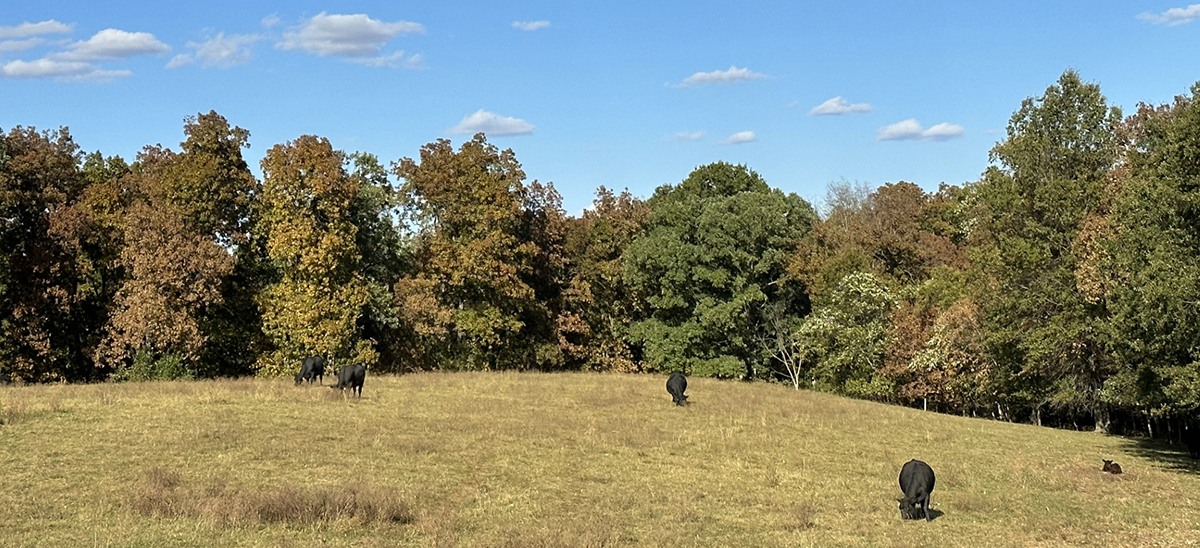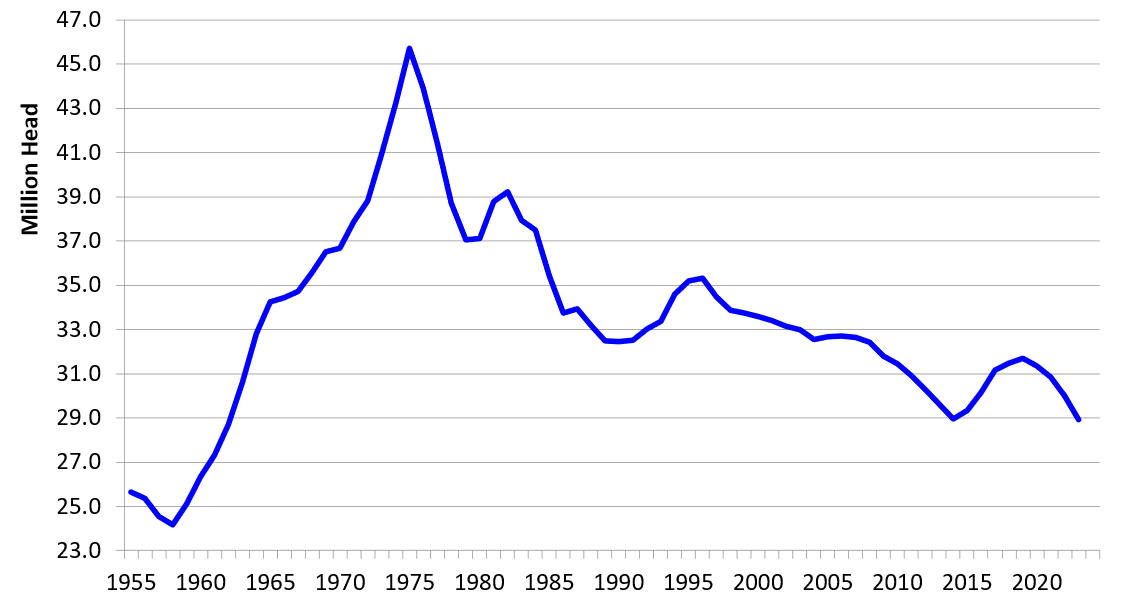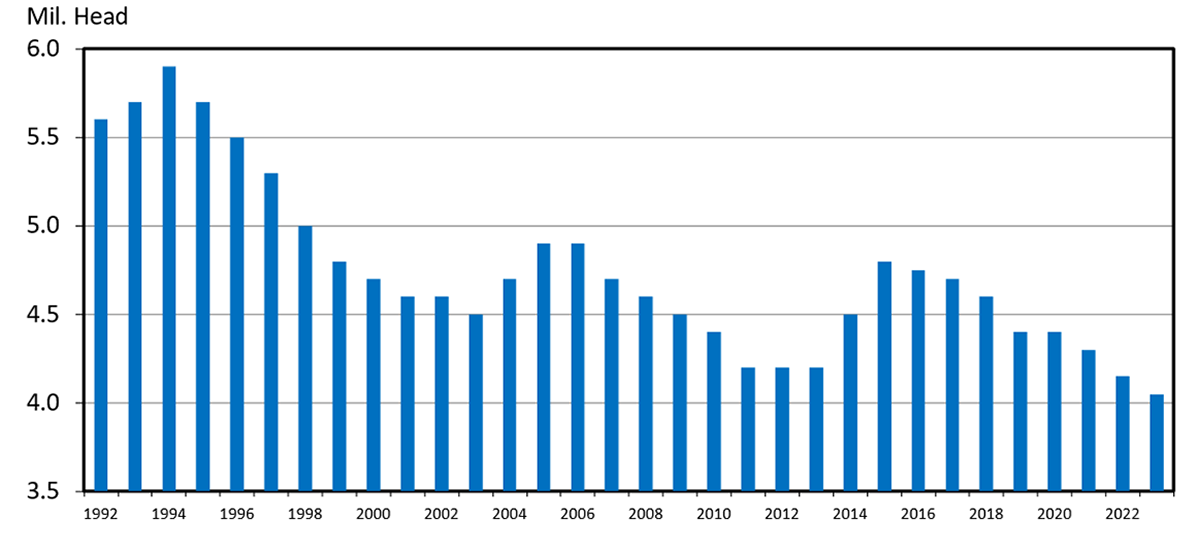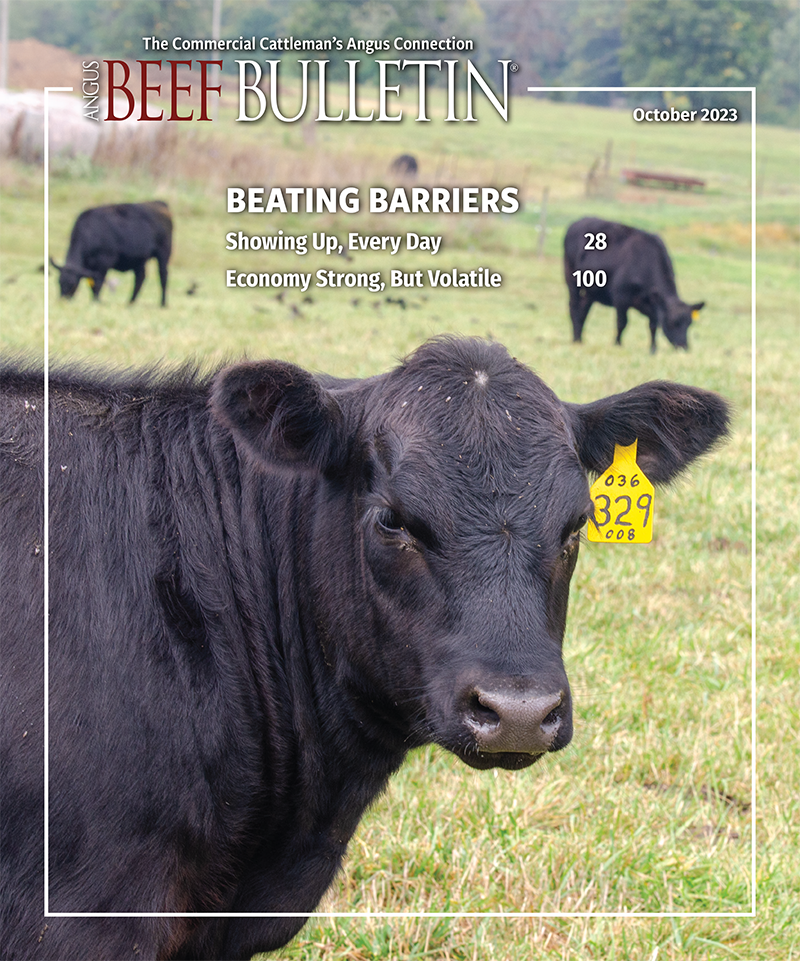
Cattle Market — How Long Will High Prices Last?
Economist predicts good prices to last for years to come.
Derrell Peel, Extension livestock marketing specialist at Oklahoma State University, says the increase in cattle prices this year actually started last year, as cattle numbers dropped. The midyear 2023 cattle inventory report showed the national cow herd is still getting smaller, he says.
U.S. Beef Inventory, January 1, 2023
Click here for larger image. |
“Supplies will continue to fall, so we expect to see continued strength and uptrend in cattle prices, even though we are at record-high levels right now. We’ve passed the previous highs with fed-cattle prices and the bigger feeder cattle,” says Peel.
Even though cow numbers have dropped, there are no indications herds are starting to rebuild. With high prices, some stockmen will continue to sell females, especially in drought areas where hay is high-priced and scarce.
“The July cow numbers were the lowest in the history of that inventory report, which goes back to the early 1970s,” says Peel (see Fig. 1). “We currently have the smallest beef cow herd in the U.S. since the early 60’s, so there will be a need to rebuild, and it looks like this is just beginning to happen.”
Peel thinks herd rebuilding won’t start in earnest until 2024 (see Fig. 2). Once rebuilding begins, cattle supplies will be even tighter because more heifer calves will be held for breeding purposes.
“Beef production, even though still falling this year (4.5%-5% lower on an annual basis), will be down even more next year,” he says, further predicting beef production to drop 6%-8% in 2024 because of rebuilding. “This will keep supporting cattle prices to ever-higher levels through much of that time period.”
It’s always a matter of supply and demand. Retail prices are still moving higher, and wholesale boxed-beef prices are substantially higher than they were this time last year. As supplies tighten more, those prices will continue to push higher, Peel says.
Those higher prices in the grocery stores will lead to some reduction in beef consumption the next couple of years as some consumers make changes due to price.
“Demand is key, and demand is still strong. Even though there won’t be as much beef, consumers still want it, so this is a positive sign regarding demand,” he says.
Heifer Retention, July 1, 2023
Click here for larger image. |
“We still have drought in some regions, and hay is still scarce or expensive,” he continues. “We recently received new hay data from USDA, and hay production is up somewhat overall, but in areas that are still in drought, supplies are tight and pastures need time to recover. Even though we’re seeing rain in these areas now, it takes a while for the resources to heal and hay supplies to replenish.”
There are many factors involved in why herd rebuilding will be slow. They include continuing drought, areas recovering from drought, financial recovery, high input costs (inflation keeps increasing dramatically) and high interest rates, Peel says. In spite of the increase in cattle prices, profit margins haven’t necessarily improved as much as cattle prices have improved. If herds are slow to rebuild, this will tend to support cattle prices — and probably extend the amount of time we’ll have relatively strong prices.
Editor’s note: Heather Smith Thomas is a freelance writer and cattlewoman from Salmon, Idaho. Graphs provided by Derrell Peel. [Lead photo by Shauna Hermel.]



